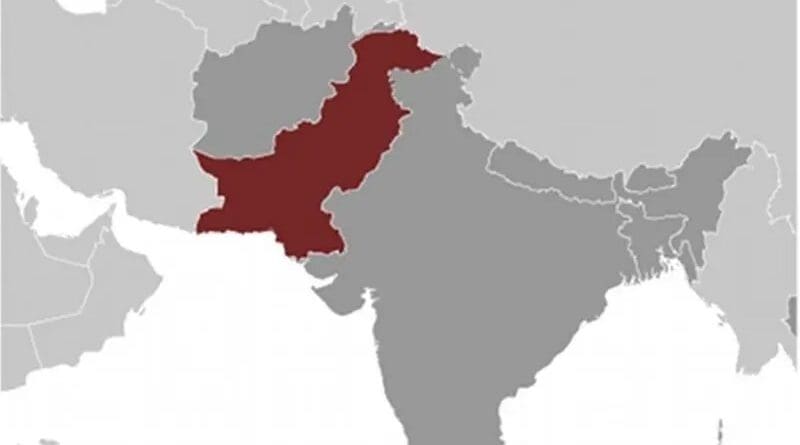Main Climatic Issues Of Pakistan In 2012 – OpEd
Pakistan is basically an agricultural country, the landscape is predominantly arid. Water, already a scarce commodity in most parts of the country, is now facing further shortages. Because of the poverty and population growth, there has been an over-exploitation of natural resources. An unplanned increase in industrialisation and urbanisation has led to pollution in water, air, and land. Along with water shortages, land degradation has been an issue.
Environmental issues in Pakistan threaten the population’s health and have been disturbing the balance between economic development and environmental protection not much serious attention was paid to environmental issues in Pakistan in 2012. Related concerns, such as renewable resources for power productions, sanitation and potable water, received earlier scrutiny.
Year 2012 in Pakistan was really difficult for environment and climatic conditions. First shock given by Government was the dissolution of the Ministry of Environment and the creation of a new Ministry of Climate Change. The breakdown and reconstruction of institute took much time so many serious issues were neglected badly. Almost at the end of year, in September Ministry decide to develop programmes to meet the water, food and energy security issues posed by unpredictable Issues as well as prepare the country for increased incidences of natural disasters, spread of disease.
Over 90 percent of Pakistan’s water resource is used in agriculture. The agricultural sector employs nearly half of the workforce and generates a quarter of GDP. Soil used for cropping is badly affected by uncontrolled utilisation of Pesticides causing soil pollution and resulted in contaminated food production. According to World Health Organisation (WHO), about 25 million agricultural workers in our country suffer from pesticide poisoning each year that include a significant number of women. Women become victim of pesticides while performing different agronomic practises in fields. Pesticides poisoning was also well common In Pakistan, about 30 per cent women had been full-time farm workers while about 70 per cent were indirectly or directly engaged in farming.
The climate in Pakistan varies with altitude, which in turn affects the type of vegetation. It has some of the world’s highest cold areas that occur above 5,175 m in the Himalayas and the hottest low areas in the Indus Plains with many intermediate ecological zones . Flooding after effects further causing salinity in many areas leading to shortage of food. Salinity affects some 60 percent of Pakistan’s coastal farming lands, the United Nations estimates. Due to such geographical situations Pakistan faces climate extremes from very hot and arid temperatures of over 40 degrees Celsius, to severe monsoon rains and below zero degrees in winter. Pakistan in 2010 was hit by the worst floods in its history, with 84 out of 121 districts affected,But in 2012 situation improved much better as no more loss as have been observed in 2010.
A report of the United Nations Environment Programme (UNEP), per capita availability of water in the Indus basin, which lies below the Hindu Kush, Karakorum, and Himalayan mountains and is shared by Afghanistan, China, India, and Pakistan, is nearly 1,329 cubic metres per year. But water availability per capital in Pakistan is much less – below 1,100 cubic meters a year, down from 5,500 meters a year in 1950, according to government reports in 2012. Floods and glacial melt, and the silt they carry, have reduced the storage capacity of our water reservoirs and have also reduced hydro power production. An unusually long winter and delayed melting of glaciers were blamed for power shortages in June.
In 2012 Monsoon patterns have mainly disturb severely .The precipitation was 50% below normal all over Pakistan. Normally as much as 80 percent of South Asia ‘s rain falls during the June-to-September monsoon. But in the period until the end of July dry weather has been observed all over Pakistan. This shortage of rain is causing further negative impact on food commodities and the shortage of food results in inflation of food prices.
Air pollution as usual was major problem in most cities, and cause of many health hazards but no special attention was given to forest or tree plantations. Carbon monoxide emission levels in Karachi and Lahore have considerably exceeded WHO’s recommended levels. It however happens only during crowded hours not 24 hours a day. To tackle the situation we need to develop a ‘Clean Air Program’. In Pakistan it is estimated that 24% of the global disease burden and 23% of all deaths can be attributed to environmental factors. About 36% of this burden affects children from 0 to 14 years of age.
Be Positive for coming new Year and must try to enforce the law of land and for that we have to start a voluntary self-monitoring program because it is not possible to send inspectors to every industry in the country. Government planners and policy makers, in collaboration with non-government organisations, will need to develop their knowledge and skills and those of water users to understand and prepare for the new challenges posed by climate change.


yes it is time to think about climate change policy in pakistan, causes and reason to procure. Pakistan Fisherfolk Forum very concern about climate change, which we suppose be part of policy design but still far away..
we are on campaign water for indus with slogan keep river free…
saeed